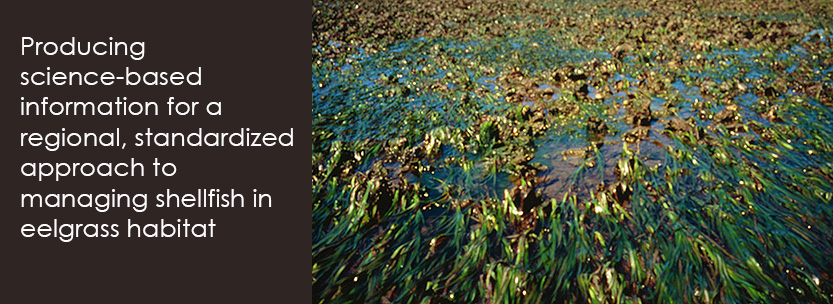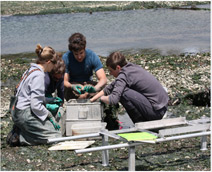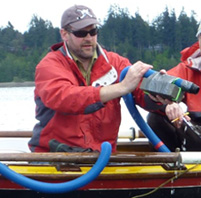|
Ensuring shellfish aquaculture is environmentally and economically sustainable is a primary concern and challenge for resource managers and commercial shellfish producers. Shellfish aquaculture activities, including new farm sites, expansions, new gear and/or farming methods, are required to obtain numerous federal, state and county permits. Resource managers must assess the environmental impacts of these activities in complex intertidal habitat that includes and overlaps with native seagrass or eelgrass (Zostera marina), which is designated as Essential Fish Habitat (EFH) for multiple Pacific salmon species (Pacific Fishery Management Council 2008). Juvenile salmon, Dungeness crab and other species within the Pacific Coast Groundfish Fisheries Management Plan utilize these estuarine habitats as nursery and growout areas (Hughes et al. 2014, Toft et al. 2015). No-net-loss provisions in federal and state regulations have resulted in a precautionary approach by managers, impeding shellfish production on the west coast. Furthermore, differences in jurisdictions’ treatment of eelgrass, such as the buffer distance between shellfish culture and native eelgrass, create inconsistencies in the process.
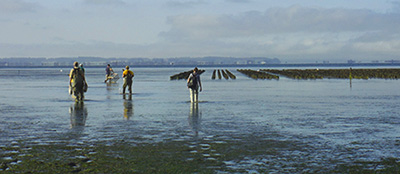
Field scientists from WA, OR and CA gear up for a multi-year project to assess ecological function of different oyster culture practices and interactions in native eelgrass. How do managed juvenile fish and invertebates use these complex habitat mosaics?
While there has been a substantial amount of research conducted on bottom culture and limited studies of longline oyster culture effects on eelgrass (reviewed in Dumbauld et al. 2009 and Ferriss et al. 2019), the interactions of new off-bottom gear types with eelgrass have only recently begun to be assessed (Hudson et al. 2018). The use of flip-bags in particular has been growing in recent years in Washington and California as a method to produce high quality, premium oysters for the singles, half-shell market, with a shorter crop cycle.
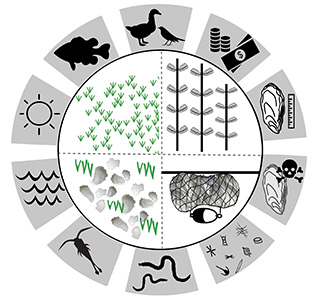
The west coast consortia will assess a suite of physical and biological variables across a mosaic of cultured and non-cultured estuarine habitat types to determine ecological function and species interactions within these complex intertidal systems. Oyster production and costs associated with different grow-out methods under different management scenarios will also be evaluated. Graphic: K.Houle (PSI), symbol credits ian.umces & piktochart
In collaboration with shellfish farms along the west coast, we will assess the interaction of eelgrass with various oyster culture systems, and the ecological functions of these habitats for managed fish and invertebrate species. We will also review and evaluate existing approaches and new aerial imagery collected with drone technology for mapping aquaculture and eelgrass, and calculate the relative cost of materials and labor involved in multiple oyster gear types, under various management scenarios.
In addition to the field research and analysis, our team will organize three ‘state of the science’ workshops. The workshops will be held in Washington, Oregon and California and serve to connect scientists, resource managers and shellfish farmers in order to disseminate project results and eelgrass/aquaculture interactions. Proceedings will also be compiled in a comprehensive report intended for reference by federal, state and local shellfish aquaculture permit reviewers.
Project Team:
Bobbi Hudson (PI) from Pacific Shellfish Institute, and the following Co-PI’s: Dr. Beth Sanderson, (NOAA Fisheries NW Fisheries Sci. Center), Dr. Brett Dumbauld (USDA Agricultural Research Service), Dr. Jennifer Ruesink (UW Dept. of Biology), Jeff Cordell and Jason Toft (UW School of Aquatic and Fishery Sciences), Dr. Kristy Kroeker (Univ. of CA, Santa Cruz), Dr. Trina Wellman (Northern Economics), and Phil Bloch (Confluence Environmental Co.). Funding for this project comes from the Pacific States Marine Fisheries Commission (PSMFC).
Partners:
Project Summary (printable 1-pg PDF) |
|
|
A Coast-Wide Effort: WA, OR, CA
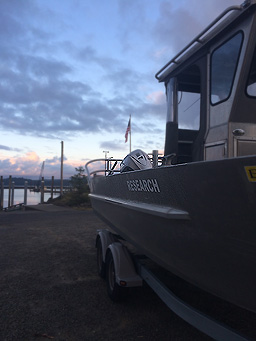
State of the Science Workshop:
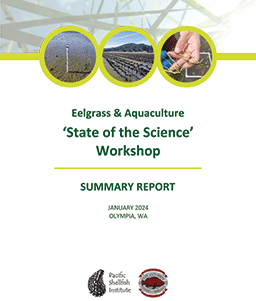
RELATED RESEARCH:
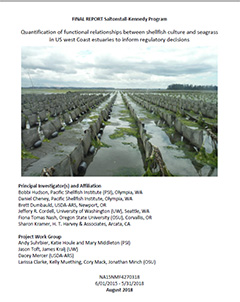
Hudson et al. 2018, final report from previous PSI led, collaborative research quantifying habitat use of estuarine fish and invertebrates in oyster long-line culture and adjacent eelgrass habitats in WA, OR and CA.
|
|






